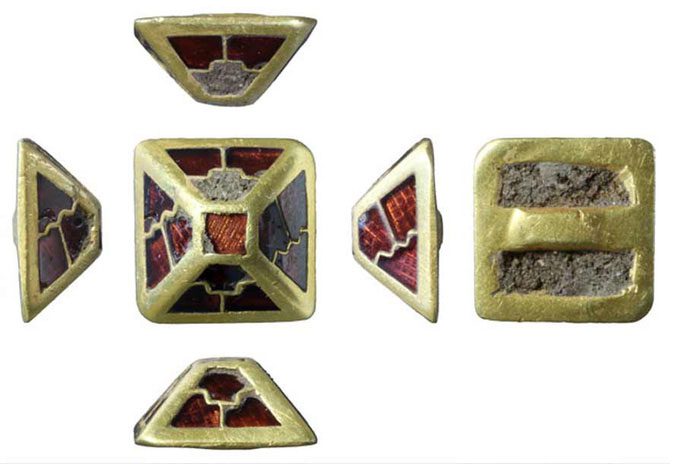A finely crafted gold and garnet pyramid is a priceless treasure for collectors and archaeologists alike, as it reveals a wealth of unique historical data.
According to Ancient Origins, the tiny treasure was discovered by amateur archaeologist Jamie Harcourt in England while he was metal detecting during a school field trip. The analysis revealed that this unusual pyramid was crafted between 560-630 AD, making it a rare ancient artifact made of gold and garnet.

Close-up of the “pyramid” adorned with a sword belt – (Photo: Norfolk Coroner Office)
Explaining to BBC, Helen Geake from the Norfolk Coroner’s Office stated that this small pyramid was attached to both ends of a sword belt by ancient people. Based on the craftsmanship of the pyramid, the individual it belonged to could have been a lord or a close attendant of a great lord or some Anglo-Saxon king, holding a very high status in society.
Several similar pyramids have been found in England, all crafted by highly skilled artisans. While pure gold is extremely valuable, what makes this artifact truly unique are the garnets that are set into it.
According to Daily Mail, this garnet could only be imported from India or Sri Lanka, with researchers leaning towards the hypothesis of Sri Lanka, as it was known in ancient times as the “Island of Gems.” The gemstones traveled a perilous 5,000 miles to reach England, often at the cost of the lives of merchant sailors.
Archaeologists emphasize that the gemstones embedded in this treasure are vivid evidence of the remarkable global trade network that existed at that time. The Island of Gems was renowned worldwide for providing nobles with emeralds, garnets, amethysts, and many other types of precious stones of the highest quality. Considering the difficult importation process 1,400 years ago, the value of these gemstones far exceeds their current worth.





















































